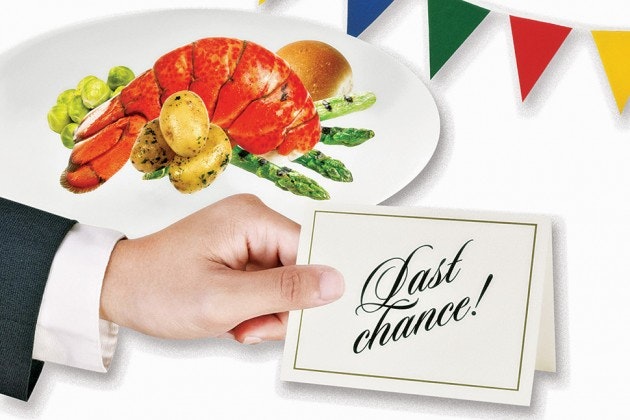FOR HOT RESTAURANTS, GOING OUT OF BUSINESS CAN BE BIG BUSINESS
By Kurt Soller

Alamy (8), Getty Images (1)
Later this month, WD-50, chef Wylie Dufresne’s hub of molecular gastronomy, will serve its last supper on New York’s Lower East Side. Since the restaurant opened in 2003, its tables have been crammed with customers eating delicacies such as scrambled egg ravioli and oysters with edible “shells.” One man, an art dealer named Stewart Waltzer, booked a seat more than 300 times. But as other, hotter joints have arrived in town, business has slowed. There weren’t enough Waltzers to buy out the building; it will soon be torn down to make room for luxury condos.
When the closure was announced in July, diners began coming out en masse. Some revisited $155 tasting menus from previous outings, while others tried knotted foie gras for the first time. All had likely seen the dramatic countdown clock Dufresne had installed on his website. “It seemed reasonable to remind people that we were still here,” he says. “Once we picked the date, why not just have some fun with it?” It was also clever marketing—most remaining reservations evaporated.
So far in 2014, 82 restaurants have shuttered in New York—the highest number since 2010, according to an October Zagat report. Yet, for a certain set of formerly hip eateries, it’s been a year of closing gloriously. Before wine bar ’inoteca shut in February, it invited customers to “help us drink all 1,300 bottles in our cellar” at a 10 percent discount. When Pastis, a French bistro owned by Keith McNally, finished in March, it held a “farewell feed” for its top customers. (Kurt Loder was there.) A petition went around in August to keep the Midtown dive bar Subway Inn open, followed by an announcement on Nov. 10 that it would soon be replicated in a nearby space.
It’s also happening outside New York: When Los Angeles’s Red Medicine was sold in October, breathless eulogies kept the chef busy until his final day; before Homaro Cantu’s iNG went down last May in Chicago, diners benefited from Groupon-style deals offering 10 courses for $99. It was the international chef Ferran Adrià, of Spain’s ElBulli, who may have invented this sort of fanfare. In 2010 he announced that his legendary restaurant would be closing—in about two years. Then, for its last bow, he flew top restaurant critics and famous patrons in via helicopter for a free 47-course meal.
Instead of offering discounts, Dufresne’s charging extra for the chance to enjoy WD-50 one last time. Starting on Nov. 19, he’ll serve an 11-course meal taking “diners on a journey of WD-50’s history” for $225. The Last Call dinner, on Nov. 29, will jump to $275. All these seats sold out almost immediately after being announced on Oct. 30. Nick Kononas, the restaurateur behind Chicago’s Alinea, who lent a ticketing platform to help with booking, tweeted that WD-50 sold “$104,000+ in first nine minutes.” Not bad for a business that’s going out of business.
Dining establishments traditionally approach their ends unceremoniously. Sometimes employees don’t know they’re out of a job until that morning. “How would you like to be one of those staff members who come in and the doors are closed?” asks Sam Lipp, managing partner of New York’s Union Square Cafe, which will close its current location at the end of 2015. “We very intentionally announced this [more than a year ahead of time], as we felt like we owed it to staff.”
It’s easier to go out with a bang when the restaurant’s fatal flaw isn’t disgusting food. Reduced post-recession salaries have caused millennial diners to cut back on eating out by 21 percent over the past seven years, according to research firm NPD Group. Additionally, restaurant analyst Tim Zagat pointed out that most restaurants are being pushed out because of rising real estate costs. Lipp had been negotiating the lease with his landlord for two years and says he’s looking elsewhere—though he wonders how far from Union Square the restaurant can move while maintaining the name.
Dufresne will focus on Alder, his other New York restaurant, and he’ll remain a star on food TV even without WD-50. “I don’t necessarily want to close the door,” he says. “But, as of yet, no hotelier has called to say he absolutely must have a WD-50 in his lobby.”
(ORIGINAL ARTICLE)
BIG BUSINESS

